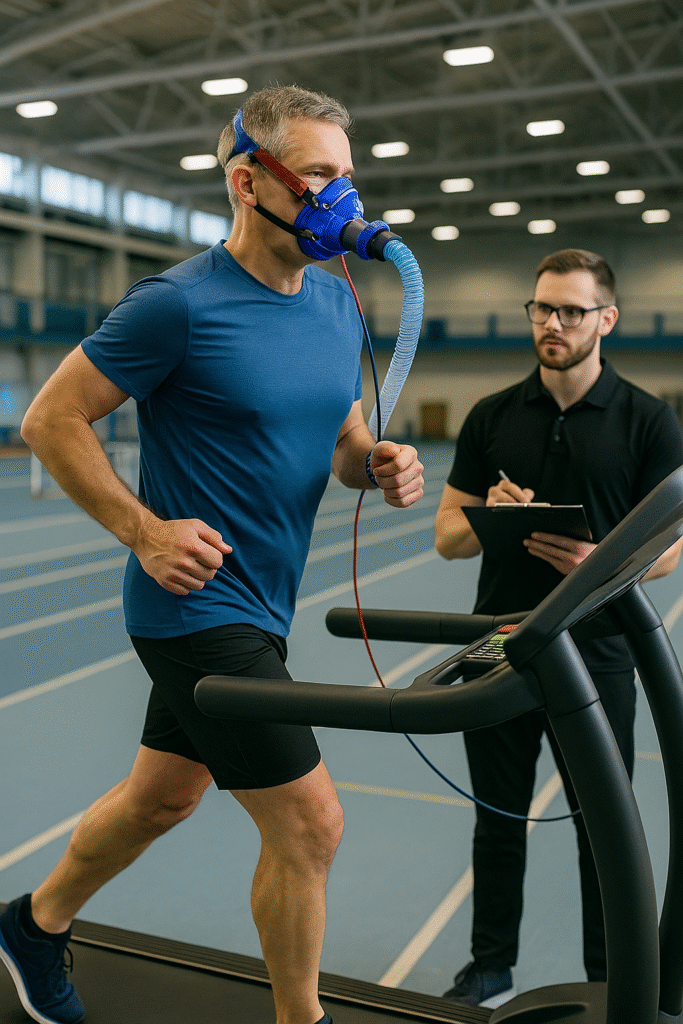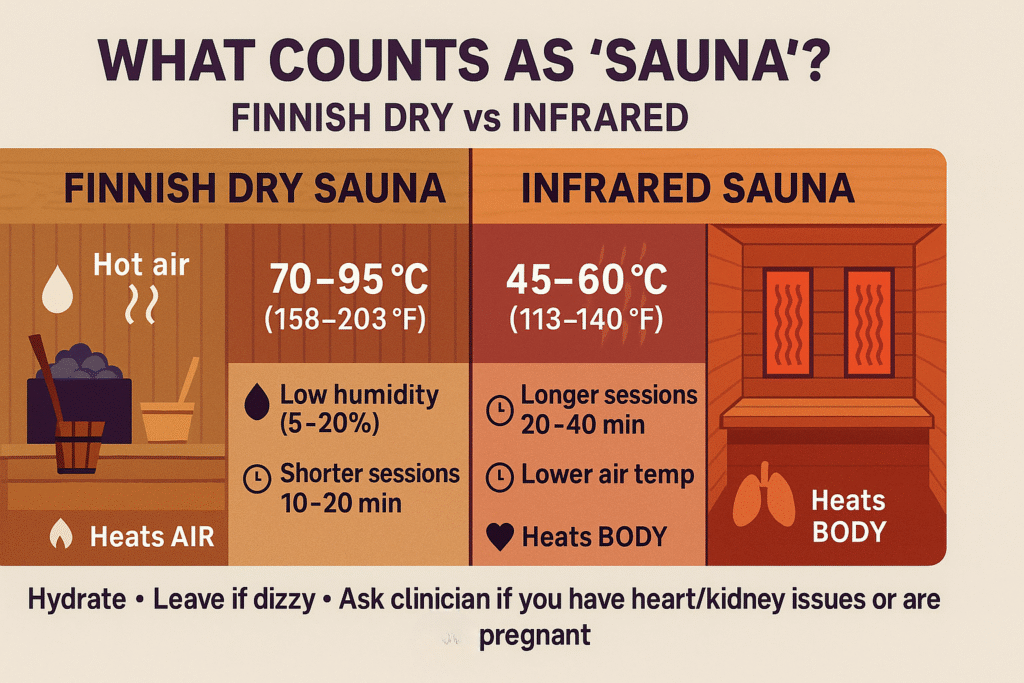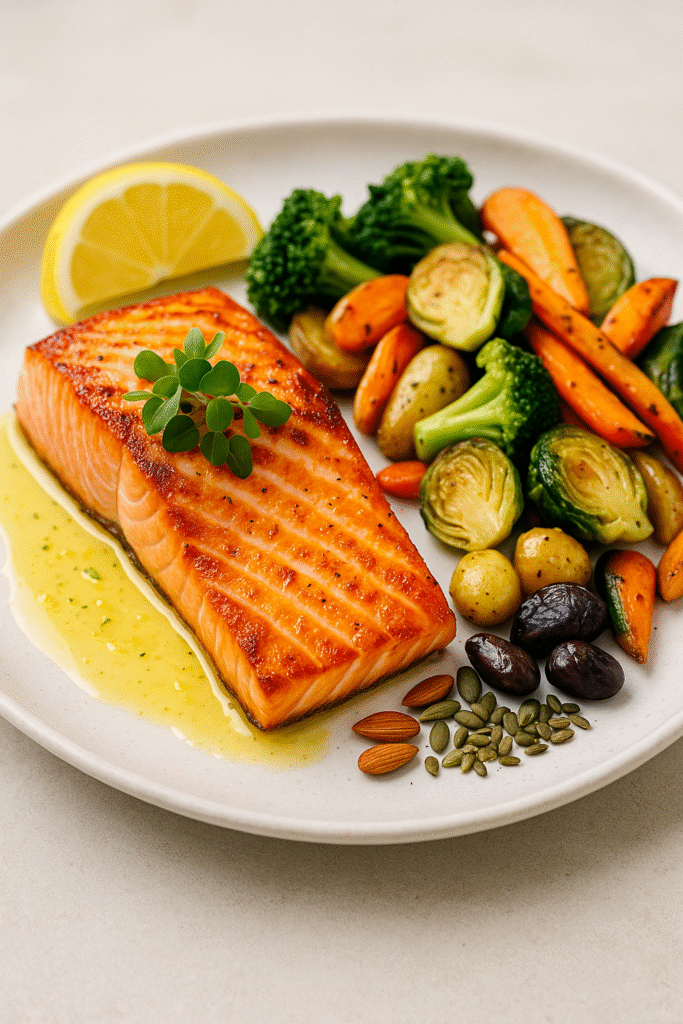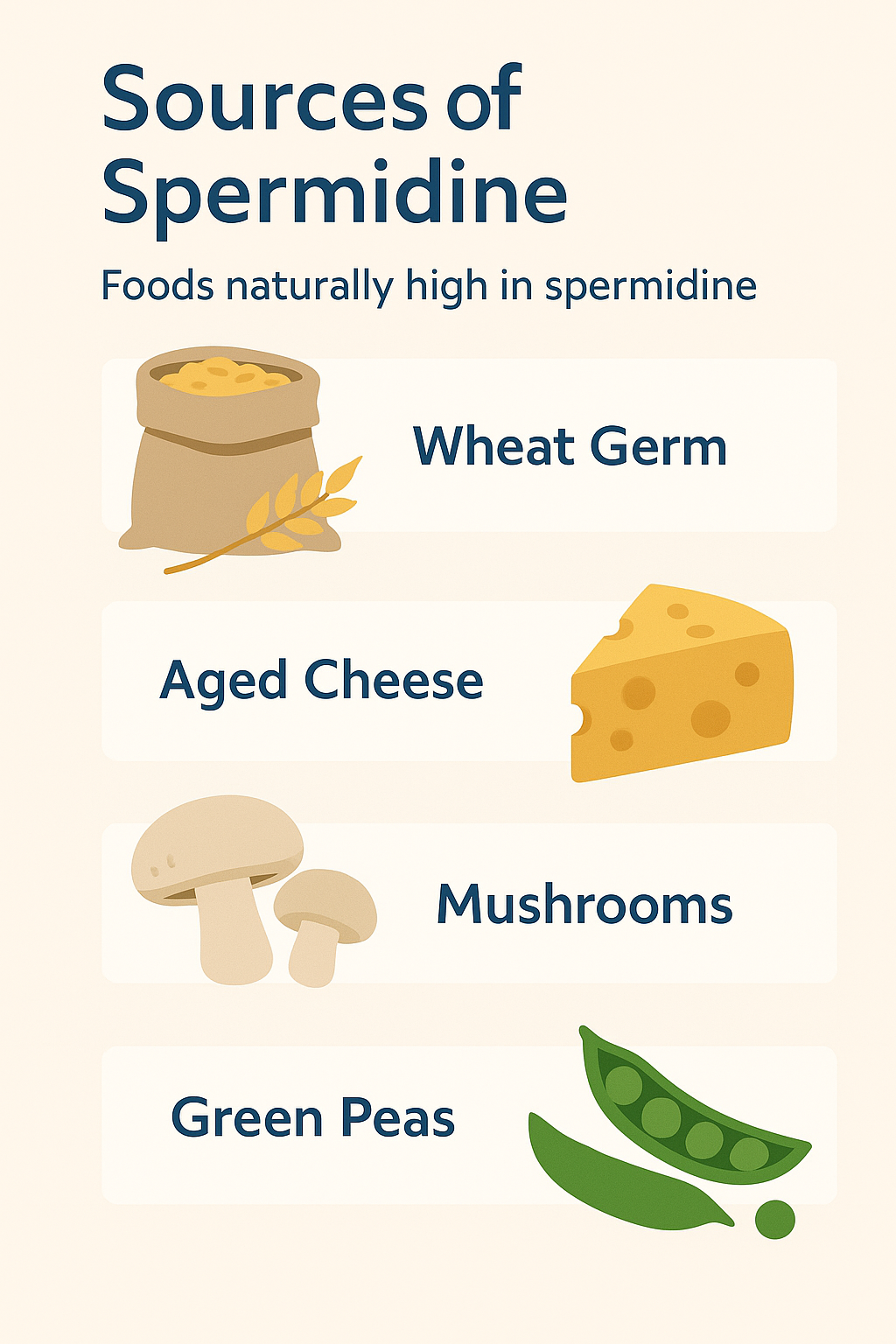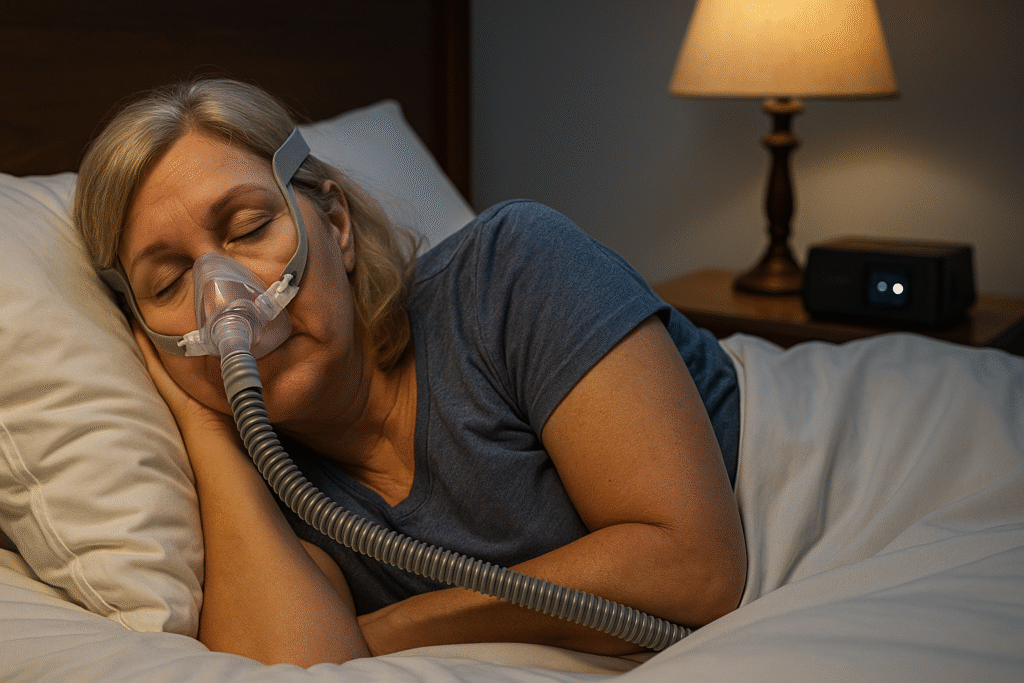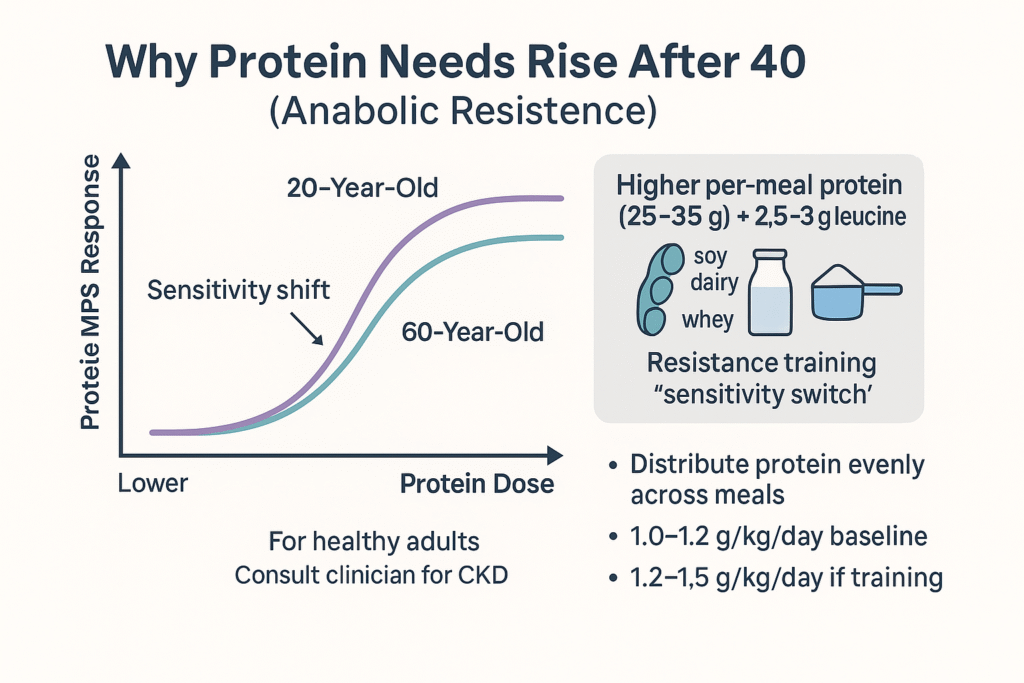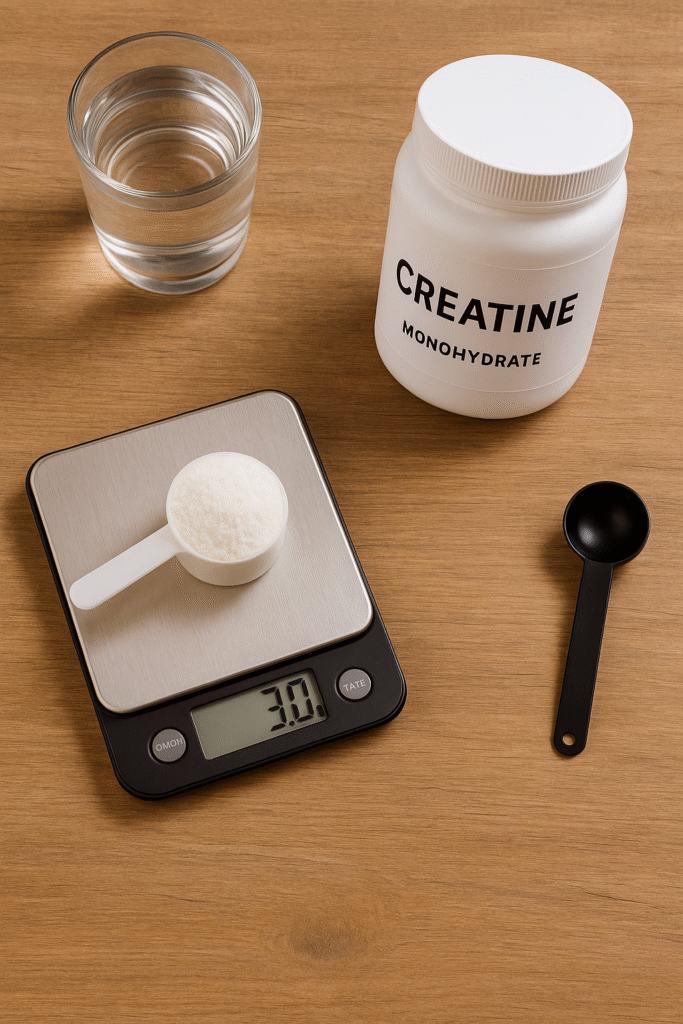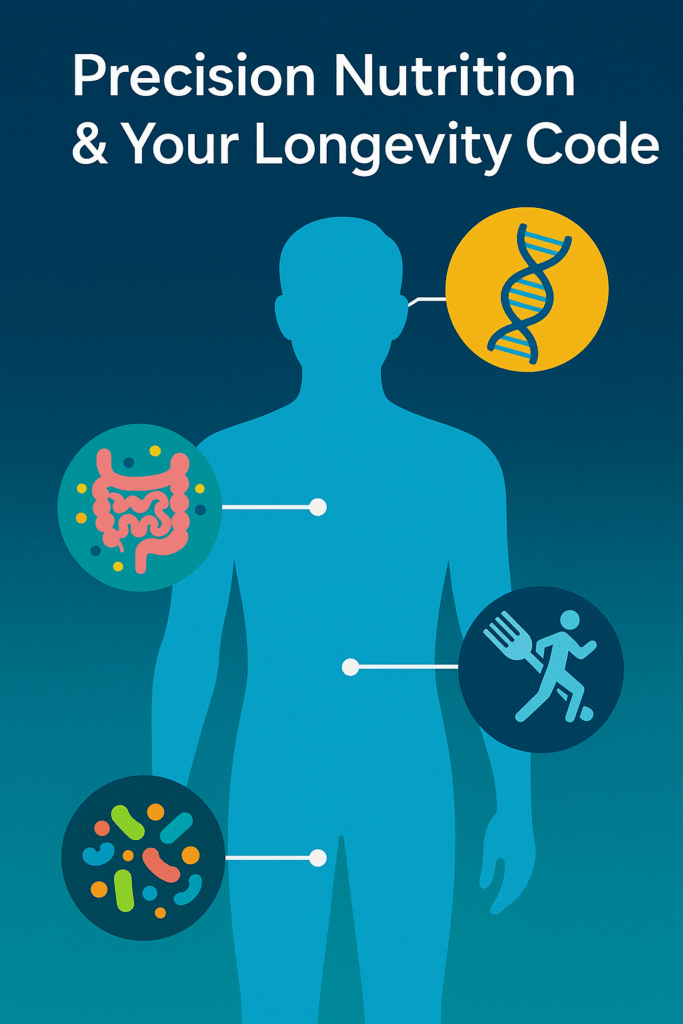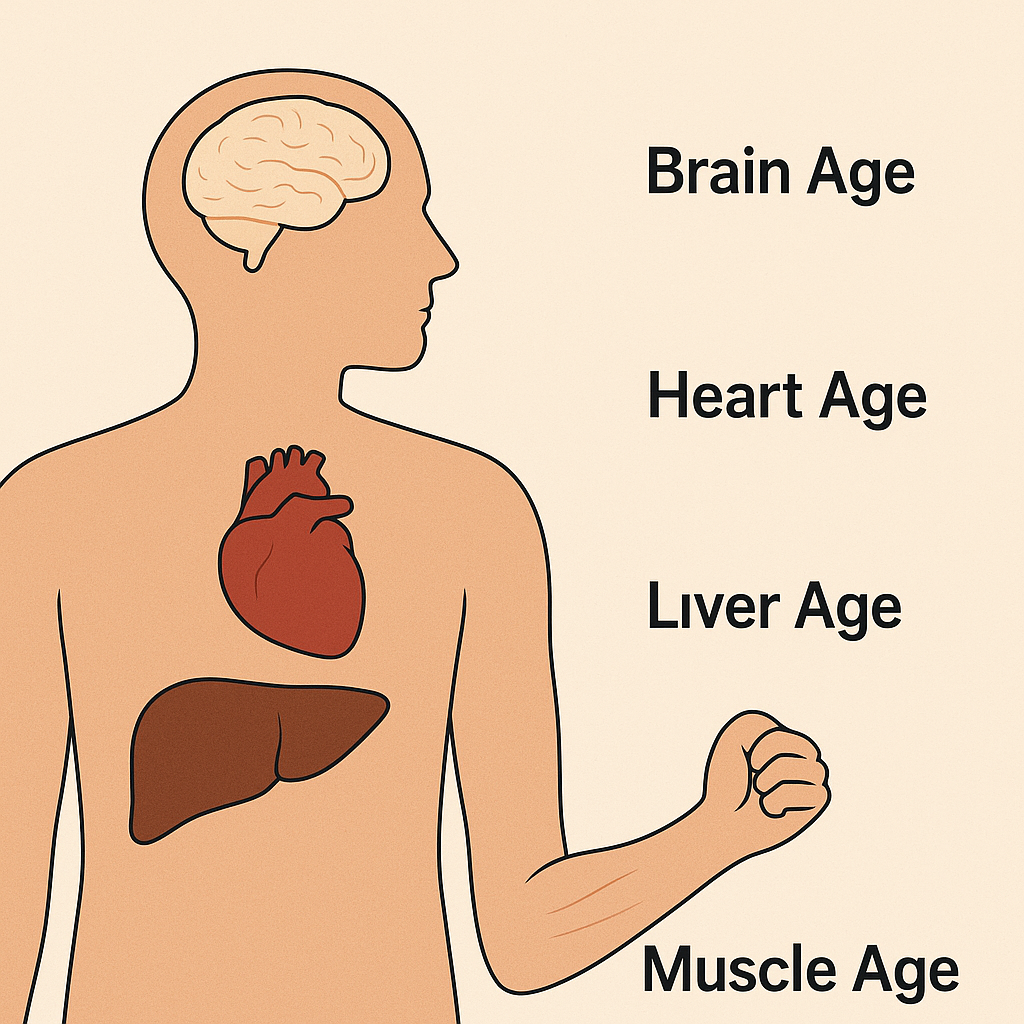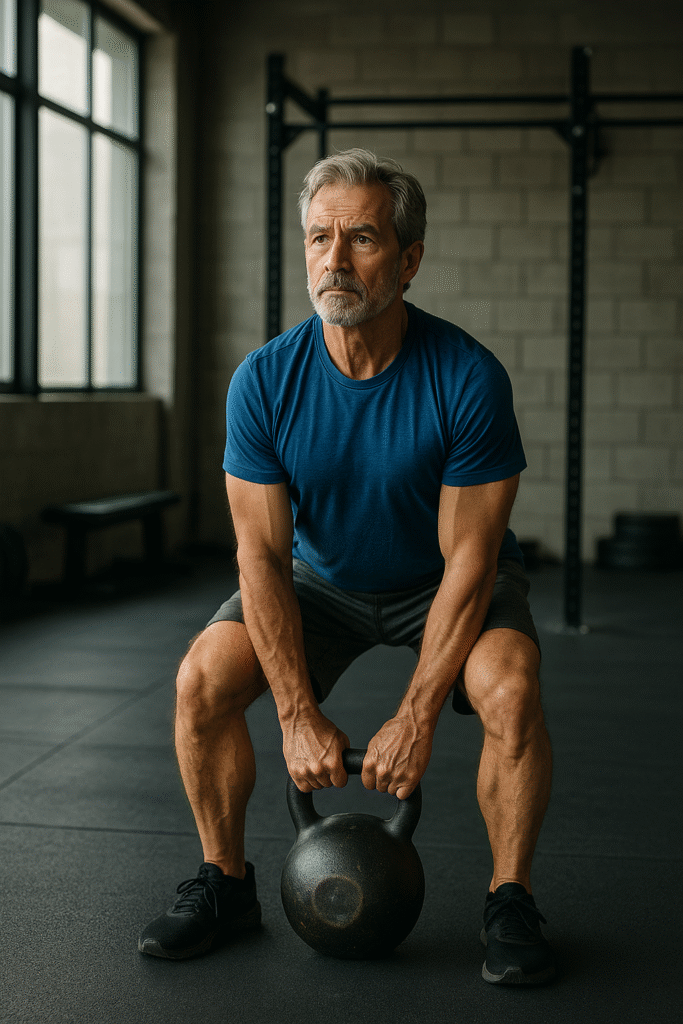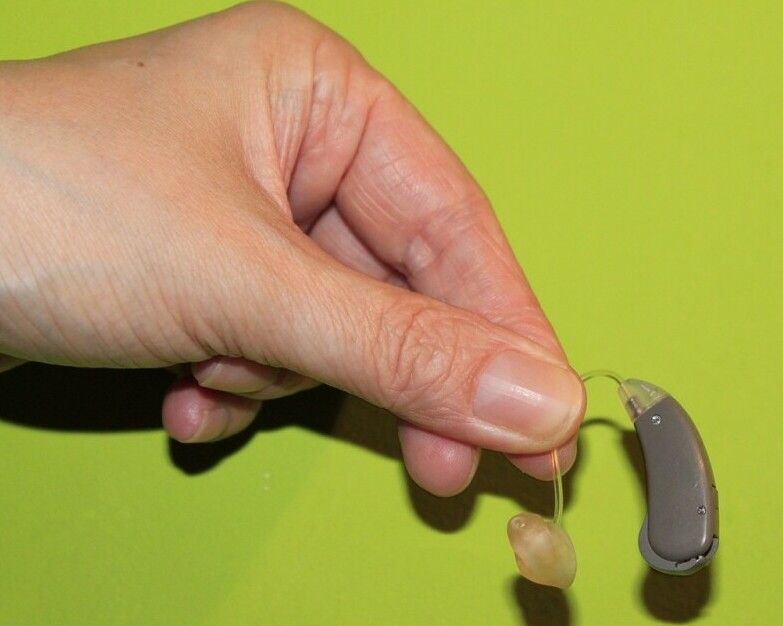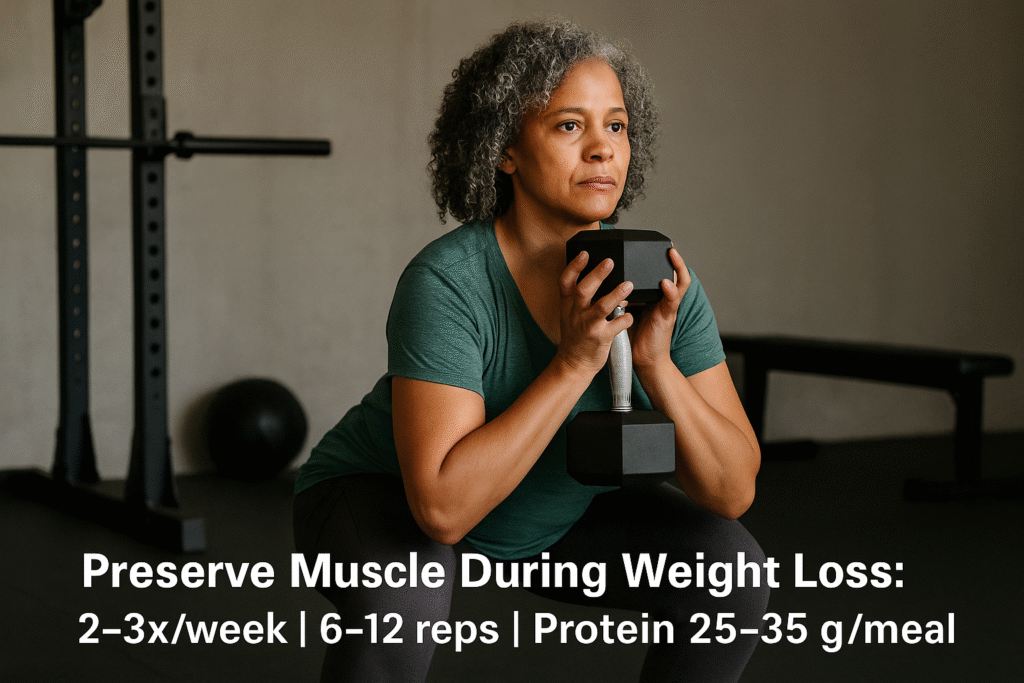VO₂Max is your maximal oxygen uptake, a marker of cardiorespiratory fitness and is one of the strongest, modifiable predictors of long-term health that aligns with longevity—and you can improve it with a smart blend of easy aerobic work and brief intervals, even if you’re starting late. JAMA Network
Higher VO₂Max after 40 tracks with lower all-cause mortality and cardiovascular events. A sustainable plan mixes moderate aerobic minutes (your “base”) with 1–2 interval sessions weekly and 2 days of strength, advancing volume/intensity gradually. Evidence shows HIIT—high-intensity interval training is particularly effective for bumping VO₂Max in midlife and older adults; still, don’t skip your 150+ min/week of moderate work for heart, joints, and adherence. Use RPE—rating of perceived exertion, talk test, or heart-rate zones to steer intensity; protect recovery, and progress no more than ~10%/week. CDC+3PubMed+3Wiley Online Library+3
Why VO₂max matters for longevity (and daily energy)
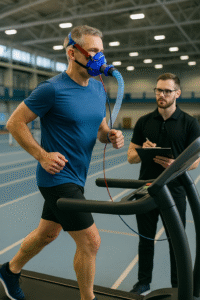
Large cohorts consistently show that higher cardio respiratory fitness (CRF) is associated with lower mortality, across ages and sexes; in clinical treadmill cohorts, each step up in fitness class maps to better long-term survival. That’s why many clinicians call VO₂Max the “vital sign” you can train. In practical terms: raising VO₂Max makes hikes feel easier, stairs less breathless, and travel days less draining. PubMed+1
Key idea: Cardio fitness and overall activity both matter—being fit but sedentary is still a problem. Keep moving most days and nudge your ceiling up with purposeful training.
If you find this topic intriguing, then check out this article on “Zone 2 vs. Intervals.“
What Dr. Peter Attia highlights about VO₂max and longevity
Dr. Peter Attia frequently spotlights VO₂Max as a central, modifiable lever for healthspan, pointing to large treadmill-cohort data where higher cardio respiratory fitness tracks with lower all-cause mortality across age groups. In his podcasts and posts, he underscores findings from the 2018 JAMA Network Open analysis of 122,007 adults, which showed a graded, “no upper limit” benefit—each fitness tier had lower risk than the tier below, with the elite fittest doing best. Attia’s practical takeaway: train to move up a fitness category (not just hit minutes) by mixing steady aerobic work with short, hard intervals you can recover from—an approach well suited to lifers in their 40s–60s.
The training mix that works: base + brief intervals
Your base (the weekly floor)
Public-health guidance for midlife/older adults: ≥150 min/week of moderate-intensity aerobic activity (or 75 min vigorous), plus 2 strength days, and some balance practice if you’re 65+. Walking, easy cycling, or swimming build heart-and-lung capacity you can repeat—the secret to adherence. www.heart.org+1
The VO₂Max bump (1–2 sessions)
Meta-analyses in adults—including older cohorts—show HIIT produces larger VO₂Max gains than doing only steady moderate work. You don’t need punishing sessions: short efforts near hard breathing with generous recoveries are enough to trigger adaptation. Wiley Online Library+2ScienceDirect+2
But what about Zone 2? Zone 2 (steady, conversational cardio just below your LT1—first lactate threshold) is excellent for base and metabolic health. Recent scholarly pieces caution against over-hyping Zone 2 as uniquely superior for mitochondria; a range of intensities (including some faster work) likely maximizes adaptations—especially if you don’t train many hours. Keep Zone 2, add small slices of intensity. PubMed+2Human Kinetics Journals+2
How to set intensity without a lab (3 simple options)

Sprint Intervals Talk test (low-tech, reliable):
Easy/Base: Speak in full sentences.
VO₂Max intervals: Only a few words at a time.
RPE—Rating of Perceived Exertion (0–10):
Base: RPE 3–4/10.
Intervals: RPE 7–9/10 (hard but controlled).
Heart-rate anchors (rough guide):
Base: ~60–75% HRmax.
Intervals: 85–95% HRmax peaks (let HR drift up across reps).
(Formulas vary; use how you feel to cross-check.)
Two 8-week plans: choose your lane
Pick one based on current fitness and joint history; both target VO₂Max after 45 while respecting recovery.
Plan A — “Builder” (newer or returning exercisers)
Week layout: 4 days (Mon/Wed/Fri/Sat or Sun)
Day 1 – Base walk/ride 35–45 min, conversational.
Day 2 – Strength (whole body) 30–40 min (squat/hinge/push/pull/carry; 2–3 sets of 6–12).
Day 3 – VO₂Max “30–30s”: 10-min warm-up → 6–10 × (30 sec hard / 30 sec easy) → 10-min cool-down (start with 6 reps; add 1 rep each week until 10).
Day 4 – Base 40–50 min (include 3–4 brisk surges of 60–90 sec if you feel good).
Progression guardrails: Total weekly time +10% max; if sleep or joints complain, hold or step back.
Plan B — “Time-crunched” (already active, wants bang for buck)
Week layout: 4–5 days
Day 1 – VO₂Max 4×4s: 12-min warm-up → 4 × 4 min hard (RPE 8/10) with 3 min easy between → 10-min cool-down. Start at 3 reps if needed; build to 4.
Day 2 – Strength 35–45 min; finish with loaded farmer carries.
Day 3 – Base 30–45 min (Zone 2 feel).
Day 4 – VO₂Max “micro-hills”: 10-min warm-up → 10 × 60–90 sec uphill / easy walk down → 10-min cool-down.
Optional Day 5 – Base/steps 30–50 min easy.
Why these work: HIIT formats (30–30s, 4×4s, short hills) are validated patterns for raising CRF in adults; you’re stacking evidence-based intensity on top of adherence-friendly base work. Wiley Online Library+1
Strength days still matter (even for VO₂max)
Stronger legs = better economy = you can do more work at a given effort. For midlife readers, 2 strength days helps preserve lean mass, joint integrity, and bone health—key for sustaining intervals. Pair this with brief balance drills(single-leg stands, heel-to-toe) if you’re 65+. CDC
Recovery rules that make progress stick
Every hard day has an easy neighbor.
Sleep 7-ish hours (your best number may vary).
Protein ~1.0–1.2 g/kg/day; hit 25–35 g per meal to support training.
Deload every 4–6 weeks (halve intervals or skip one session).
If morning HR or fatigue spikes, hold your load or repeat last week. Adaptation = training plus recovery.
“Zone 2 vs. intervals” without the drama
For VO₂Max after 45, think both/and: steady base supports heart health and joints; intervals push up your ceiling. Narrative reviews highlight that exclusively doing Zone 2 is not clearly superior for mitochondrial or fatty-acid adaptations when time is limited—you’ll likely do better mixing intensities. If you enjoy long, easy sessions, keep them, but protect one interval day weekly. PubMed+1
Safety first: who should be cautious (and how to modify)
If you have undiagnosed chest pain, unexplained breathlessness, arrhythmias, uncontrolled hypertension, or you’re returning after a cardiac event, get individualized clearance. Joint pain? Start on bike, rower, or pool; use shorter, slightly more numerous intervals (e.g., 12–16 × 30:30) that keep peak forces lower. Progress only one variable per week (time or intensity or reps). If dizziness, chest pain, or unusual shortness of breath occurs, stop and seek care.
How to measure progress (no lab required)
Time-to-distance: Your 2-mile walk gets faster at the same easy RPE.
Talk test drift: Hard efforts take longer to steal your words.
HR at a set pace: Lower over weeks = better economy.
Optional field test (advanced): A 6-min time trial on a bike/treadmill (same conditions) monthly.
FAQs
How fast can I raise VO₂Max after 45?
Many see noticeable gains within 6–8 weeks with 1–2 weekly interval days + base. Magnitude varies by starting fitness and consistency. Wiley Online Library
Are long, easy walks still worth it?
Yes—activity volume remains a powerful predictor of outcomes in older adults, independent of VO₂max. Keep your weekly minutes while layering brief intensity. PubMed
I only have 25 minutes. What’s best?
Warm up 8–10 min → 6–10 × 30 sec hard / 30 sec easy → cool down. It’s simple, joint-friendly, and evidence-based. PubMed
Product Recommendations
| Product Image | Product Name / Our Rating / Price | Primary Button |
|---|---|---|
| ||
Conclusion
Raising VO₂Max after 45 is one of the most leveraged changes you can make for healthspan. Keep your weekly base minutes for heart and joint friendliness, then add one to two short-interval sessions to push your ceiling. Pair that with two strength days, decent sleep, and protein-forward meals, and you’ll stack adaptations that make everyday life—stairs, hills, travel—remarkably easier. The plan is not heroic; it’s repeatable. Build steadily, recover well, and let your future self cash the compound interest.
I treat VO₂Max like a complementary plan: consistent, steady, and progressive with either running or cycling. The goal isn’t suffering—it’s repeatable training that bumps my fitness into the next “tier” to build upon.
Disclaimer: All the content on this site is for informational purposes only, does not constitute medical advice, and does not establish any kind of patient-client relationship by your use of this website. I am not a health care professional. The information, including but not limited to text, graphics, images and other material contained on this website are for informational purposes only. No material on this site is intended to be a substitute for professional medical advice, diagnosis, or treatment. Before starting any new regimen, supplement, diet, or program, it is crucial to consult with a healthcare professional to ensure it is safe and suitable for your individual health needs and circumstances. Here’s a little transparency: This website also contains affiliate links. This means if you click and make a purchase, we may receive a small commission. Don’t worry, there’s no extra cost to you. It’s a simple way you can support our mission to bring you quality content.


